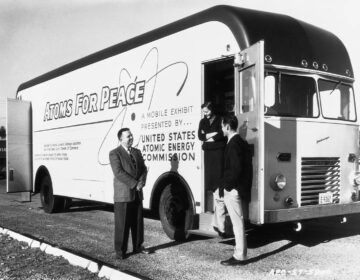Henry Sokolski at Persuasion:
 America’s most curious endeavors: Atoms for Peace and its policy that spread dangerous nuclear technology world-wide.
America’s most curious endeavors: Atoms for Peace and its policy that spread dangerous nuclear technology world-wide.
This program’s continued endurance is difficult to understand. Its historical genesis, though, is clear enough. Early in 1953, J. Robert Oppenheimer briefed Eisenhower on the findings of a classified nuclear disarmament advisory panel Truman had asked Oppenheimer to chair. The panel’s findings were grim: Within a few short years, the Soviets would have enough nuclear weapons to knock out one hundred of America’s largest cities in a surprise attack. The United States might retaliate by destroying Moscow but America itself would be in ruins. The bottom line: Unless Russia capped its nuclear buildup, America and Russia would be able to land deadly strikes against one another but be unable to survive or thrive. Compounding the problem was that Moscow might not understand this. Oppenheimer urged Eisenhower to clarify the threat publicly.
What ensued was a close-hold assignment—“Operation Candor”—a speechwriting project, chaired by psychological policy advisor C.D. Jackson to produce the seemingly impossible: a presidential address that would explain the emerging nuclear threat without frightening America.
More here.
Enjoying the content on 3QD? Help keep us going by donating now.
